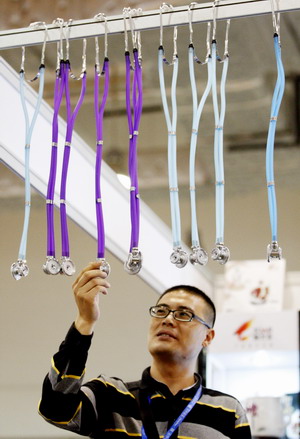High-tech devices improve healthcare
Updated: 2012-04-16 09:21
By Liu Jie in Chengdu (China Daily)
|
||||||||
Multinational companies are not alone in their enthusiasm for China's grassroots market. There is increasingly intense competition in key cities, where domestic players are becoming more competitive with new technologies and products, said Hu of Huatai Securities.
In January, China issued its 12th Five-Year Development Plan for the Medical Equipment Industry, which calls for the government to fund large research and development projects conducted by domestic companies and to support industry consolidation.
So far, the government has provided nearly 1 billion yuan to dozens of R&D projects. It will support the development of 10 to 15 large Chinese medical device companies by providing preferential land and taxation, as well as streamlined product registration and approval procedures and public tender rights. The goal is to build eight to 10 medical device giants, each with an annual output worth more than 5 billion yuan.
Shenzhen-based Mindray Medical International Ltd, set up in 1991, has become one of the top 10 Chinese medical equipment producers by sales. Its annual sales are expected to exceed 10 billion yuan by 2015, according to CEO Liu Jie.
Today, the company's products are found in 95 percent of China's major hospitals; its patient monitoring equipment has ranked first in sales for 11 consecutive years. Its latest product - an iPad-like patient monitor - is selling well, both in China and overseas.
Ten years ago, a patient monitoring device was priced at more than 100,000 yuan. Today it costs no more than 50,000 yuan.
"Foreign giants, which dominated China's high-end (medical device) market, did not want to reduce prices. However, they were forced to do so, because our products have the same quality and are priced lower. If they maintain their high prices, they will lose the market," said Liu.
So far, three top international companies, GE Healthcare, Philips Healthcare, and Siemens Healthcare, occupy about 70 percent of China's high-end medical device market.
Mindray, which does business in more than 100 nations and regions, expects its business to grow faster domestically than overseas.
Better care?
Such advances in technology do not always translate directly into savings or better care for patients, however.
Luo Jiansheng, 56, suffers from cardiovascular disease and usually visits the China-Japan Friendship Hospital in Beijing.
"For a general examination, such as a blood test or an electrocardiogram, the prices have remained relatively stable, compared with the overall inflation of recent years. However, for some complicated tests, such as nuclear magnetic resonance and ultrasonic examinations, the prices have jumped as much as 300 to 400 percent over the last five years," he said.
Luo considered seeing doctors in community clinics or other medium-sized hospitals, but was told that all his tests would need to be done again at the new facility.
"I don't know why I should pay to have the same tests done again and again if I change hospitals," he said.
Li Hongshan, executive vice-president of the Chinese Hospital Association, admitted duplication of services is a problem.
"That's mainly due to the lack of a unified database among medical institutions in China," he said. "On the other hand, we cannot deny that some hospitals are making money (from duplicate examinations)."
In addition to improved medical technologies and devices, many other new products have been developed to make diagnosis more accurate and treatment more targeted. These may help tailor therapies, reducing both the cost and discomfort experienced by patients, Li added.

 Relief reaches isolated village
Relief reaches isolated village
 Rainfall poses new threats to quake-hit region
Rainfall poses new threats to quake-hit region
 Funerals begin for Boston bombing victims
Funerals begin for Boston bombing victims
 Quake takeaway from China's Air Force
Quake takeaway from China's Air Force
 Obama celebrates young inventors at science fair
Obama celebrates young inventors at science fair
 Earth Day marked around the world
Earth Day marked around the world
 Volunteer team helping students find sense of normalcy
Volunteer team helping students find sense of normalcy
 Ethnic groups quick to join rescue efforts
Ethnic groups quick to join rescue efforts
Most Viewed
Editor's Picks

|

|

|

|

|

|
Today's Top News
Health new priority for quake zone
Xi meets US top military officer
Japan's boats driven out of Diaoyu
China mulls online shopping legislation
Bird flu death toll rises to 22
Putin appoints new ambassador to China
Japanese ships blocked from Diaoyu Islands
Inspired by Guan, more Chinese pick up golf
US Weekly

|

|







